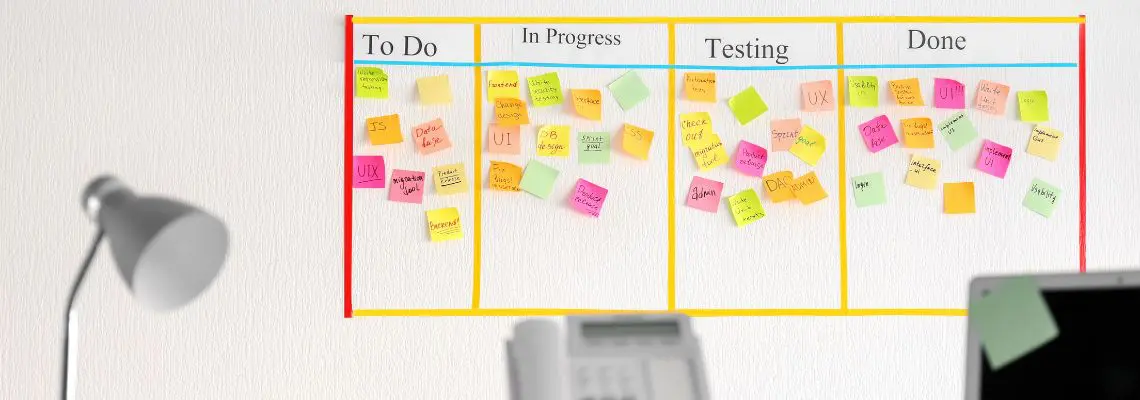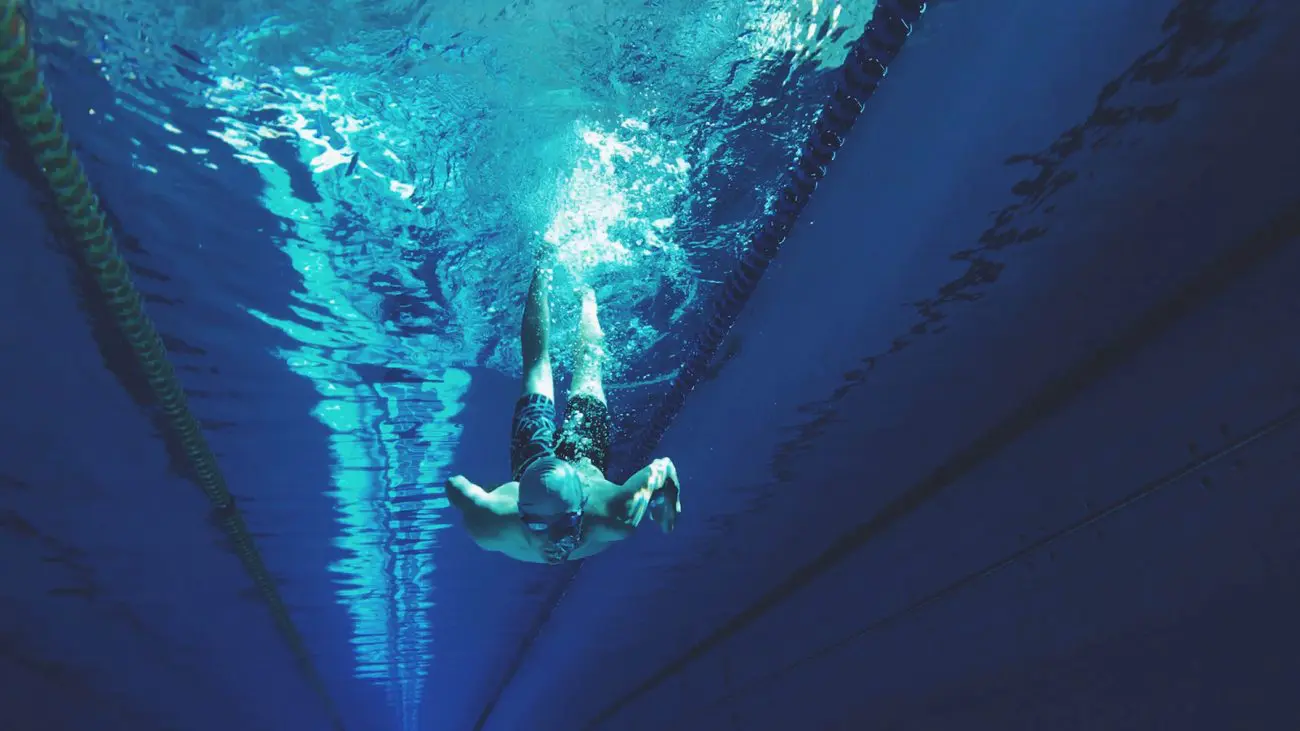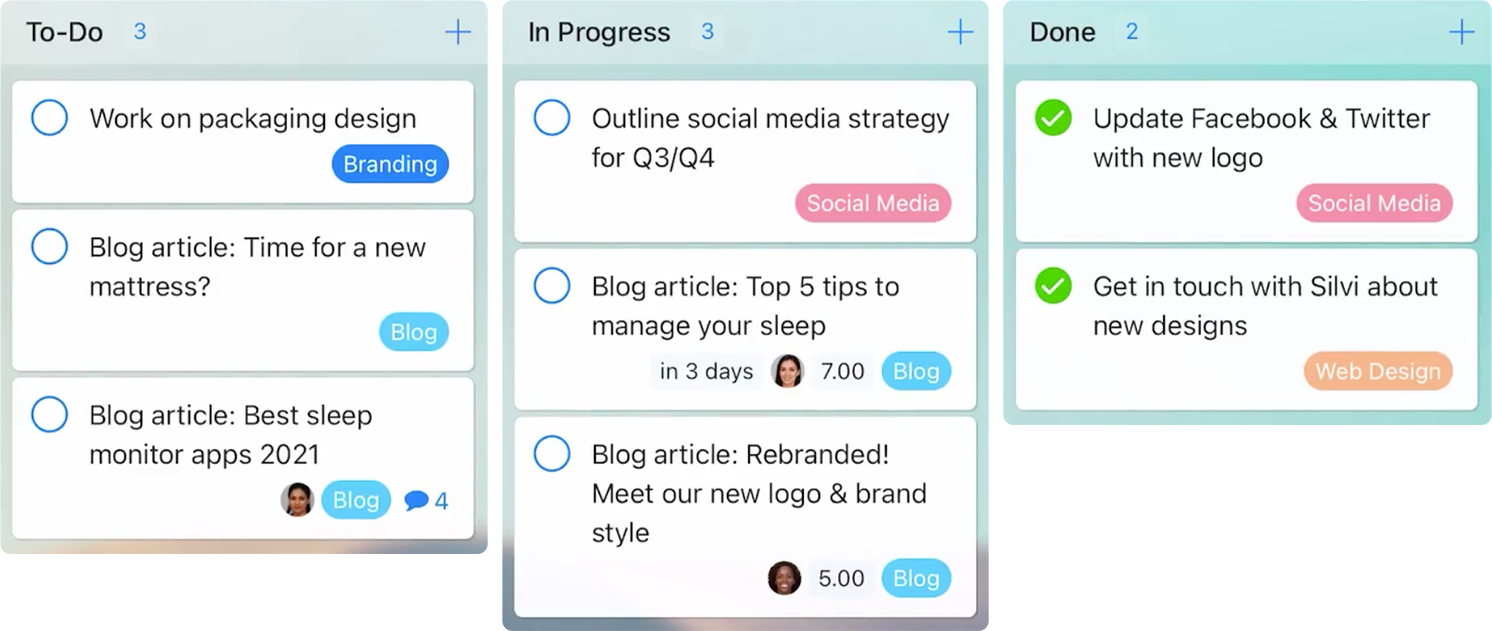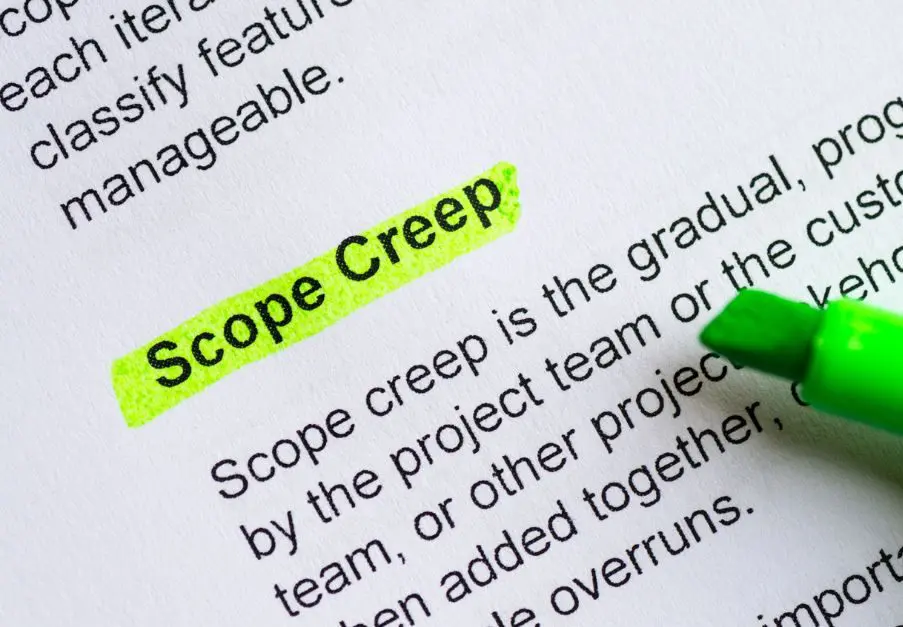
What swimlanes are to a Kanban board is the same as what guacamole is to a burrito. Burritos are scrumptious on their own, but adding guac to the mix gives it that added oomph. Using a Kanban board sans swimlanes is still going to get you organized, but really, would you pass up a chance for guac?

Kanban swimlanes belong to the world of Agile, so before splashing into what the Kanban swimlane definition is, I thought to dip into Agile Project Management for a little background info.
Agile Project Management
Created as a response to the glitches in the traditional, linear waterfall approach, the Agile methodology is key for any team who is looking to continuously improve their development process. It places a large emphasis on flexibility, collaboration, and high-quality results.
The Agile method aims to be clear and measurable. It does this by using six main deliverables to produce content and track progress and includes seven recurring events for product/service development. This type of process provides developers and their team the chance to improve their product/service before the final cut, making them less prone to client dissatisfaction and wasted effort. Kanban is an extended benefit of Agile development.
That all being said, Kanban can be used by anyone for any project they’re working on, not just for software development!
What Is a Kanban Swimlane?
With the objective to help the development of a product or service run as smoothly as possible, a Kanban board — just for a quick refresher — is a visual management tool that provides you with visualization of a work process. They can be used in a physical format (think post-it notes and a whiteboard) or digitally (like Zenkit’s project management tool).
The basic three-column structure, ‘To-Do, Doing, Done’, is a great tool to use when working in teams. Illustrating the work stream, using this shared visual management tool keeps everyone involved in the activity in the loop, allows them to track progress, and provides transparency. All necessary components of a quality organization.
Using Kanban swimlanes gives you that extra organization boost as it enables you to further distinguish tasks/items within the work process. A Kanban swimlane can be best described as the visual element on the board that categorizes tasks/matters. Flowing horizontally, its purpose is to offer distinction, and the group said tasks/items, throughout the stages in the process that require more flexibility. This provides a better overview of the tasks and the work process.

Don't let project management be a headache.
Get started with our easy-to-use project management software for free today!
There are various things that a Kanban swimlane can represent. But before you go dividing tasks, do keep in mind that swimlanes must represent parts of the process that run in parallel.
Examples of how swimlanes may be categorized are:
- Priority
- Date-driven requirement
- Teams/departments/individuals
- Blocked items
Priority
Priority-based swimlanes draw attention to the different levels of task urgency and put focus on the most urgent items. Having a visual representation paints a clearer picture, and highlights what tasks need attending to first.
Date-driven requirement
Using swimlanes to separate tasks based on date-driven requirements is another example of how this added feature can take task management to the next level. Having tasks organized this way allows the work process to be more measurable.
Teams/Departments/Individuals
Depending on the nature of your project, and the size of your team, allocating groups with their own swimlanes would prove to be useful. This gives teams a chance to take control of their own tasks while having an overview of the entire work process. Smaller teams may even choose to divide swimlanes between individuals. (Tip: you can do this by setting a member field to group your swimlanes in Zenkit)
Blocked Items
Another way to utilize Kanban swimlanes is to represent tasks/items that are awaiting further action to move forward. Having this extra step, where items can be placed on a wait queue, can prevent task overload, and make the process more manageable.
Final Thoughts
How you choose to implement swimlanes on your Kanban board is entirely up to you. A customizable feature, you can add them on as many, or as few columns as you see fit. Keep in mind that the beauty of Kanban is its simplicity, so adding swimlanes purely because they’re an added feature will go against what its initial intention was — effective task management. To utilize swimlanes to their full potential, just remember to only apply them when necessary for things to go swimmingly.
Has using Kanban swimlanes improved your team’s task management? Let us know how in the comment section below 🙂
Cheers,
Dinnie and the Zenkit team





Leave a Reply